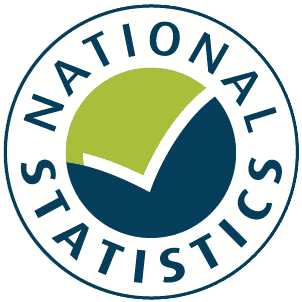National curriculum assessments: key stage 2, 2011 (revised)
Revised information on the 2011 national curriculum assessment at key stage 2, including breakdowns by pupil characteristics.
Applies to England
Documents
Details
Reference ID: SFR31/2011
Publication type: Statistical first release
Publication data: Local authority data
Local authority data: LA data
Region: England
Release date: 15 December 2011
Coverage status: Final
Publication status: Published
This statistical first release (SFR) provides revised 2011 key stage 2 national curriculum assessment results for pupils (typically aged 11) in schools in England at national and local authority level.
Information on attainment has also been broken down by different pupil characteristics:
- gender
- ethnicity
- English as a first language
- free school meal eligibility
- special educational needs
- income deprivation affecting children index
This SFR also provides the updated percentage of pupils making expected progress in each of English and mathematics between key stage 1 (KS1) (typically age 7) and key stage 2 (KS2).
Two former SFRs, ‘National curriculum assessments at key stage 2’ and ‘Key stage 2 attainment by pupil characteristics” have been combined to produce this SFR, enabling a more comprehensive and coherent evaluation of pupils’ achievements at key stage 2 to be presented.
The revised figures are based on data used in the primary school (key stage 2) performance tables. The figures contained within this publication combine this revised data with the information gathered through the school census in January 2011. Figures in this SFR update provisional figures released in August in SFR18/2011. This SFR also provides the academic year 2010 to 2011 update to the characteristics SFR35/2010.
National curriculum tests are a measurement of achievement against the precise attainment targets of the national curriculum rather than any generalised concept of ability in any of the subject areas. The national curriculum standards have been designed so that most pupils will progress by approximately one level every two years. This means that by the end of key stage 2 (age 11), pupils are expected to achieve level 4.
All gaps and differences have been calculated on unrounded data therefore some figures may not add up in the following text.
All schools
The percentages of pupils achieving the expected level, level 4 or above, in the 2011 key stage 2 tests by subject are as follows:
- English 82% (up 2 percentage points from 80% in 2010)
- reading 84% (up 1 percentage point from 83% in 2010)
- writing 75% (up 4 percentage points from 71% in 2010)
- mathematics 80% (up 1 percentage point from 79% in 2010)
- both English and mathematics 74% (up 1 percentage point from 73% in 2010).
The percentages of pupils achieving above the expected level, level 5 or above, in the 2011 key stage 2 tests by subject are as follows:
- English 29% (down 3 percentage points from 33% in 2010)
- reading 43% (down 8 percentage points from 50% in 2010)
- writing 20% (down 1 percentage point from 21% in 2010)
- mathematics 35% (up 1 percentage point from 34% in 2010).
The percentages of pupils achieving level 4 or above in the 2011 key stage 2 teacher assessments by subject are as follows:
- English 81% (no change from 2010)
- mathematics 82% (no change from 2010)
- science 85% (no change from 2010).
Maintained mainstream schools
Pupils are expected to make two levels of progress between key stage 1 and key stage 2. The national percentages of pupils making the expected progress by subject are as follows:
- English 85%
- mathematics 83%.
The median average percentage of pupils making two levels of progress of all maintained mainstream schools is used as part of the current KS2 floor standard. This school level median by subject is as follows:
- English 87%
- mathematics 86%.
Maintained schools: pupil characteristics
A higher percentage of pupils of Chinese, Indian, Irish and mixed white and Asian origin reached the expected level in both English and mathematics than their peers.
70% of pupils for whom English is not their first language achieved the expected level in both English and mathematics. For pupils whose first language is English, the percentage was 75%.
58% of pupils known to be eligible for free school meals (FSM) achieved the expected level in both English and mathematics compared with 78% of all other pupils (pupils known not to be eligible for FSM and pupils with unknown eligibility grouped together).
The percentage of pupils with special educational needs (SEN) without a statement who reached the expected level in both English and mathematics increased by 1 percentage point from 37% in 2010 to 38% in 2011. The percentage of pupils with a statement who achieved the expected level in both English and mathematics has increased from 13% in 2010 to 15% in 2011.
Pupils resident in the least deprived areas, as defined by the income deprivation affecting children index (IDACI) continue to outperform pupils resident in the most deprived areas, in terms of percentages achieving the expected level.
Local authority achievement
The percentages of pupils achieving level 4 or above at key stage 2 in each local authority (excluding the City of London and Isles of Scilly local authorities which only have 1 school each) range from:
- 74% to 91% in English
- 77% to 92% in reading
- 65% to 86% in writing
- 69% to 90% in mathematics.
Emma Sass - Attainment Statistics Team
Telephone: 0207 340 8357
